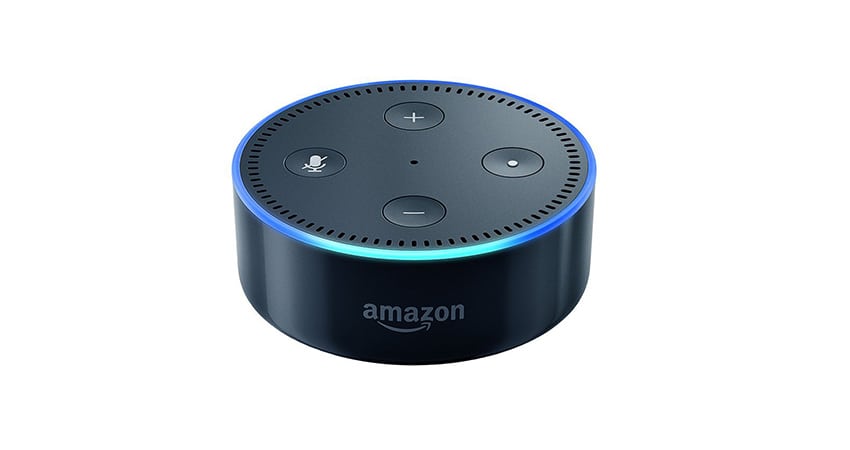Alexa, add tomatoes… Alexa, add milk… Alexa, add eggs…”
These commands are quite common in our household – every time someone notices something’s missing, we just ask Alexa to add it to our shopping list. That list is then updated on our mobile app, and whoever’s out shopping picks up what’s needed. This is our number one killer app for Amazon Echo. And now with Amazon’s acquisition of Whole Foods, the next step is quite obvious: “Alexa, buy and deliver the groceries at 6pm…”
This holiday season may be the first large scale debut of voice shopping with consumers. Amazon has enabled voice shopping via Alexa since February and recently Google teamed up with Wal-Mart to enable voice shopping for Wal-Mart products. Not to be outdone or miss out on the potential, Target has added themselves to the list as well.
Shopping using our voice is nothing new. Consumers have been using their voices to complete transactions for many years, but those were mostly human-to-human interactions in person or via phone calls. So what will it take to convince consumers to use their voice to comfortably command a phone or appliance to actually buy something?
Voice is the most natural human interface. We learn to use our voice as babies, so the move towards voice shopping likely is a natural evolution for retail. As a result of Siri, Alexa, Waze and other voice-activated tools, verbal interactions with devices and automated systems for getting directions or answers to questions are increasingly more familiar to consumers.
Nevertheless, many consumers may still have concerns about triggering an actual purchase via voice only. Voice recognition and language understanding isn’t always perfect, and people may worry about a bot accidentally ordering the wrong item. Also, if I can buy things with my voice, can I stop others from using their own voice to buy things on my behalf, which I may not approve of?
The good news is that technology is catching up quickly. With the abundance of recorded phone calls and input from virtual assistants that are available for mining, solutions such as speech analytics have significantly improved voice recognition and language understanding abilities, opening the door for artificial intelligence (AI) to enable much more effective voice commands, including voice shopping. As with any new technology, adoption will likely occur in waves. And, like other new platforms, such as mobile before it, voice activated shopping will require ongoing tuning and tweaking based on rich sources of data to help understand and guide the customer experience, and secure its effectiveness and success as a trusted and profitable channel.
The role of analytics and data in the adoption of voice shopping
Let’s examine some potential elements that could help achieve faster adoption of voice shopping:
- Having enough knowledge about the customer and the situation: If I’m in front of my computer, voice shopping may not be that necessary or useful, but if I’m driving and forgot to pick up that bottle of wine for dinner, and my virtual assistant can order my preferred type to be at my house by 6 PM, voice shopping may become extremely useful. Integration into location services and IoT may play a key role here.
- Accuracy and relevancy: Since we’re not merely asking for information but triggering a financial transaction, voice shopping needs a high level of accuracy and a process of simple verification. Higher-quality noise canceling microphones can help but most importantly, constant linguistic and acoustic recognition tuning will be critical.
- Security: If my voice now has access to my credit card or bank account and represents my signature, it needs to be secured. Voice biometrics (already deployed in some leading banks for authenticating callers into the contact center) can achieve high levels of accuracy and security, seamlessly verifying that the person ordering the item is the rightful account owner.
- An effective bot persona: Shopping can be an emotional experience, like effective free-speech IVR applications that require a persona mimicking what a human-to-human interaction may sound and feel like. Mining and understanding these human-to-human interactions will be important for creating the right customer experience via voice shopping.
- Constant monitoring and improving points of failure: Every failed voice shopping transaction may drive the customer to a different traditional channel (unless it’s so frustrating that it will lead to abandonment). Organizations will need to capture these critical points of failure and translate insights into improvements and bug fixes so they won’t happen again.
Many of these best practices and associated technologies are already deployed in traditional sales environments to improve sales conversion rates. For example, retailers have analyzed calls into their contact center, and by monitoring these human-to-human conversations, have been able to customize and define which products to offer, and how and when to offer them.
An international retailer analyzed sales interactions from their contact center. They found that changing specific words in the offer, as well as the timing of the offer, had a big impact on the conversion rates. For example, mentioning a “two-for-one” deal was less effective than mentioning “buy one get one free.” And for a specific skin cream product, asking the customer about their past experience with the product was less effective than asking the customer about their skin condition today.
A large global company found that trying to transition a service to sales opportunity by asking the customer for “a moment of their time” reduced sales conversion rates from 15 to six percent, while asking the right, probing questions earlier and during the service segment of the call could increase sales by almost 50%.
Many large organizations are mining recorded phone calls to identify mobile and digital self-service failures. These rich human-to-human insights are quickly translated to improve the mobile and digital experience, increase conversion rates and reduce cost to serve and sell.
These examples illustrate that words matter, and in a voice shopping environment, they will matter even more. Understanding the customer and full context of the situation will help in applying the right offer, guidance, wording, security and accuracy that together will be critical in driving faster adoption of voice shopping. Voice is the richest source of information about how and why customers purchase or don’t purchase. Leveraging this unique data asset will be a key success factor.
A look at holiday shopping and the road ahead
It will be interesting to see how voice shopping is received this holiday season and whether its success will contribute to its long-term adoption and trust. Nevertheless, the evolution will come in stages. There will be the early adopters, but voice shopping won’t be pervasive or significant right away. There will be a transition time where people will grow into trusting voice shopping applications to make larger or more complex purchases.
This holiday season, we expect to see incremental adoption of voice shopping, but if retailers get it right and monitor their failures and analyze collected data, instead of waiting in lines next Black Friday, we may find ourselves instructing Alexa to buy that new virtual reality headset!
Voice will be the platform of the future, with AI, machine learning, IoT, analytics, biometrics and bots coming together to transform the customer experience. Eventually, we will get to a place where we can use voice to communicate with anything and anyone because it is the quickest and easiest form of communication. Removing the need for a keyboard or other device to help us interact with the virtual world opens up great possibilities for commerce and beyond.
Voice shopping will likely become natural in the same way that mobile shopping has become natural. As companies increasingly go digital, voice shopping is part of their future. Those using the right analytics tools and best practices will do a better job in monitoring and adjusting accordingly to deliver a positive customer experience.
Daniel Ziv is Vice President of Customer Analytics for Verint

